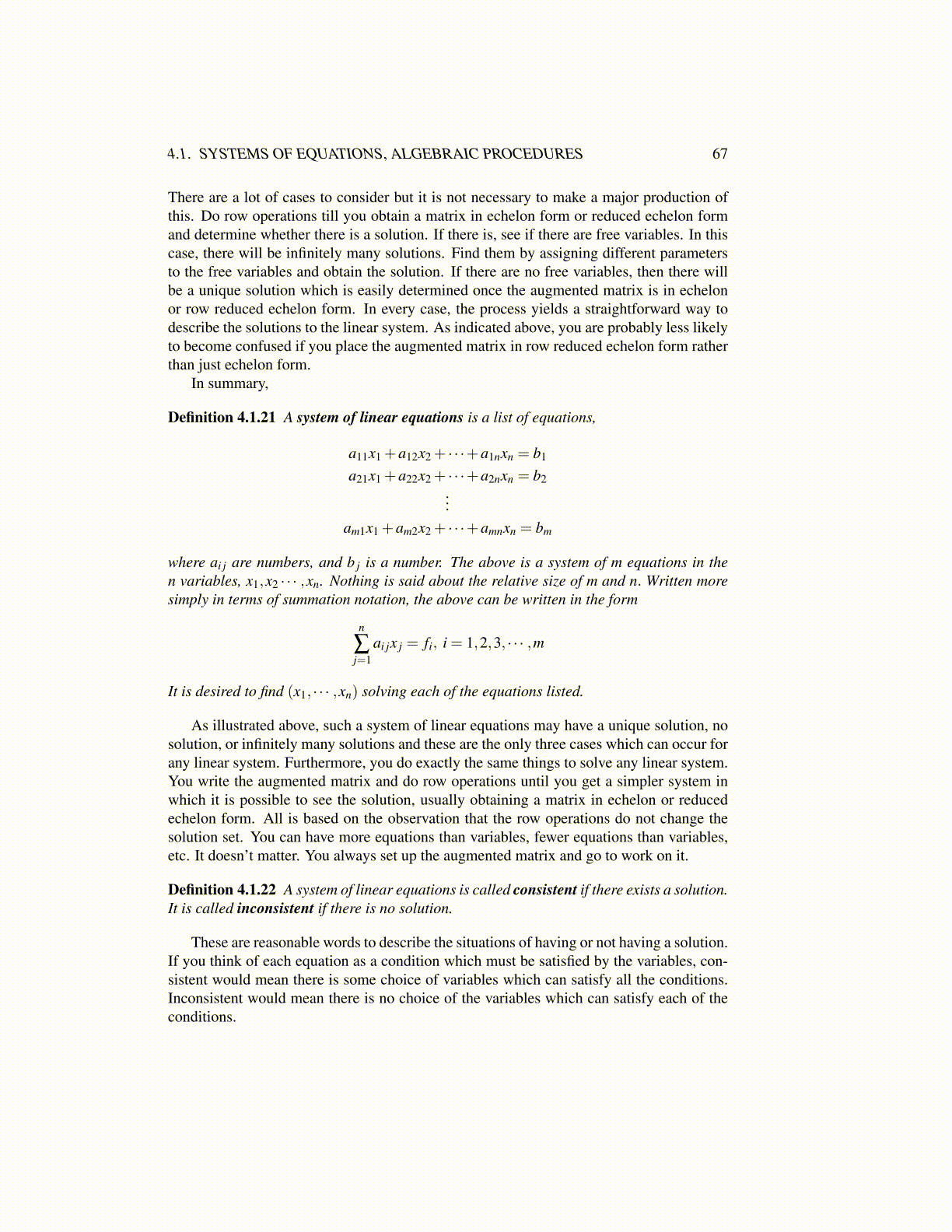
4.1. SYSTEMS OF EQUATIONS, ALGEBRAIC PROCEDURES 67
There are a lot of cases to consider but it is not necessary to make a major production ofthis. Do row operations till you obtain a matrix in echelon form or reduced echelon formand determine whether there is a solution. If there is, see if there are free variables. In thiscase, there will be infinitely many solutions. Find them by assigning different parametersto the free variables and obtain the solution. If there are no free variables, then there willbe a unique solution which is easily determined once the augmented matrix is in echelonor row reduced echelon form. In every case, the process yields a straightforward way todescribe the solutions to the linear system. As indicated above, you are probably less likelyto become confused if you place the augmented matrix in row reduced echelon form ratherthan just echelon form.
In summary,
Definition 4.1.21 A system of linear equations is a list of equations,
a11x1 +a12x2 + · · ·+a1nxn = b1
a21x1 +a22x2 + · · ·+a2nxn = b2...
am1x1 +am2x2 + · · ·+amnxn = bm
where ai j are numbers, and b j is a number. The above is a system of m equations in then variables, x1,x2 · · · ,xn. Nothing is said about the relative size of m and n. Written moresimply in terms of summation notation, the above can be written in the form
n
∑j=1
ai jx j = fi, i = 1,2,3, · · · ,m
It is desired to find (x1, · · · ,xn) solving each of the equations listed.
As illustrated above, such a system of linear equations may have a unique solution, nosolution, or infinitely many solutions and these are the only three cases which can occur forany linear system. Furthermore, you do exactly the same things to solve any linear system.You write the augmented matrix and do row operations until you get a simpler system inwhich it is possible to see the solution, usually obtaining a matrix in echelon or reducedechelon form. All is based on the observation that the row operations do not change thesolution set. You can have more equations than variables, fewer equations than variables,etc. It doesn’t matter. You always set up the augmented matrix and go to work on it.
Definition 4.1.22 A system of linear equations is called consistent if there exists a solution.It is called inconsistent if there is no solution.
These are reasonable words to describe the situations of having or not having a solution.If you think of each equation as a condition which must be satisfied by the variables, con-sistent would mean there is some choice of variables which can satisfy all the conditions.Inconsistent would mean there is no choice of the variables which can satisfy each of theconditions.